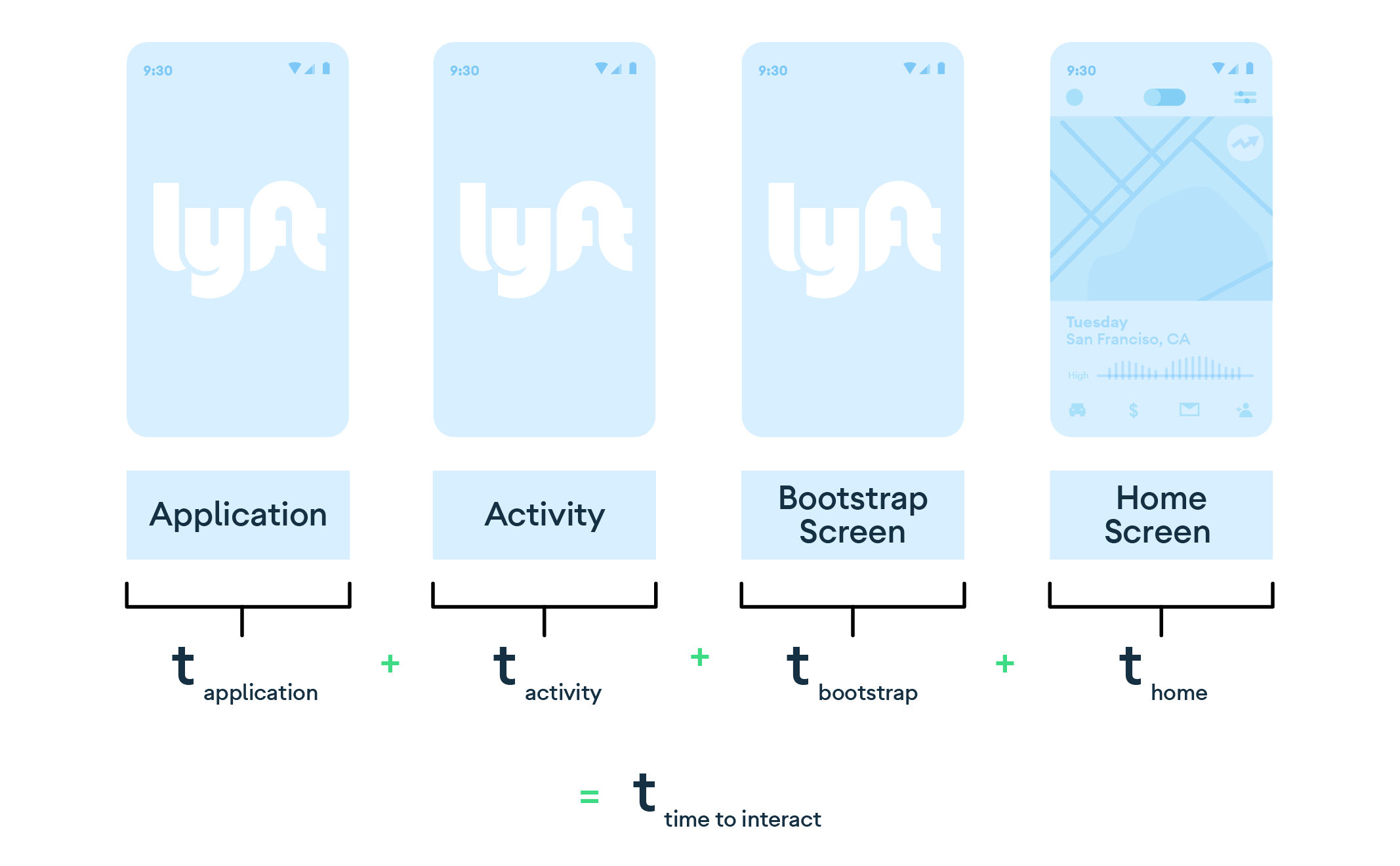
Lyft는 우수한 앱을 만들기 위해 최선을 다하고 있습니다. 당연하지. 매일 수백만 명의 운전자와 탑승자에게 시간에 민감한 필수 서비스를 제공하는 차량 공유 앱의 경우 속도가 느리거나 응답하지 않는 앱은 엄청난 불편을 야기합니다. 원활한 운영을 위해 Lyft 개발팀은 앱 성능을 주의 깊게 살피고 있습니다. 이를 통해 Android 드라이버 앱의 시작 시간이 느리다는 사실을 알게 되었습니다.
시간에 민감한 우선순위가 너무 많은 조직에서는 모든 프로젝트를 신중하게 검토해야 합니다. 개발팀은 시작 시간이 느리면 고객 경험에 영향을 미친다는 것을 알고 있지만 이를 위해 고위 경영진에게 문제의 범위를 먼저 설명해야 했습니다. 이를 위해서는 명확한 비즈니스 사례가 필요했습니다.
진행한 작업
Lyft 개발팀은 Android vitals를 사용하여 차량 공유 분야의 동급 애플리케이션에 비해 Lyft Driver의 시작 시간이 15~20% 느립니다. 경영진에 사례를 제기하는 데 필요한 것이 바로 이것입니다.
문제의 범위를 표로 제시한 후 한 달 동안 일한 개발자 한 명이 앱의 시작 시간을 크게 개선할 수 있을 것으로 예측했습니다. 이는 경영진이 거부할 수 없는 가치 있는 투자입니다.
경영진의 지원 덕분에 이들은 난관 자체를 찾아야 했습니다. 앱의 시작 프로세스를 검토하고 여러 단계로 나누었습니다.

앱은 원활하게 시작되고 UI 렌더링이 예상대로 진행되었지만 앱이 네트워크에 연결되어 홈 화면을 렌더링하기 위해 데이터를 요청하는 세 번째 단계인 부트스트랩 단계에서는 병목 현상이 발견되었습니다.
팀은 문제를 해결하기 위해 재빨리 움직였고, 불필요한 네트워크 호출을 삭제하고, 일부 호출이 비동기적으로 실행되도록 이동하고, 세션 간에 데이터를 캐시했습니다.
결과 및 학습
이처럼 비교적 간단한 개선으로 앱 시작 시간이 평균 21% 크게 감소하고 드라이버 세션이 5% 증가했습니다. 초기 실험을 통해 앱 우수성에 어느 정도 투자하면 가치 있는 결과를 얻을 수 있다는 사실이 입증되었습니다. 이를 바탕으로 Lyft 경영진은 이니셔티브를 확대하고 앱 안정성을 비롯한 다른 문제들을 해결하기 위해 노력했습니다.

Lyft가 Lyft Driver Android 앱을 어떻게 개선했는지에 대한 기술적 세부정보를 읽어보려면 기술 우수사례를 읽어 보세요.
Android vitals 및 Google Play의 앱 검색 가능 여부 정보
- Google Play는 앱 시작 시간을 앱 품질의 주요 결정 요소로 간주합니다.
- Android vitals를 사용하면 제품 소유자가 실제 기기에서의 주요 앱 측정항목의 이전 실적을 파악하고 추적할 수 있습니다.
- Google Play Console에서 제품 소유자는 집계된 실적 데이터를 카테고리의 다른 앱과 비교하여 업계 최고의 앱을 제공할 수 있습니다.
- Android vitals를 사용하면 앱 응답 없음 (ANR) 발생률, 비정상 종료 발생률, 렌더링 성능, 앱 시작 시간 등의 측정항목을 비교할 수 있습니다.
- 앱 시작 시간은 사용자 환경의 중요한 측정항목입니다. 시작 시 앱이 느리거나 응답하지 않으면 사용자는 불만을 느끼거나 완전히 주의를 잃을 수 있습니다.

